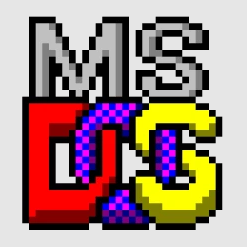


Microsoft has announced that it is open sourcing MS-DOS 4.0, in collaboration with IBM, who developed portions of the code. It will be available under the MIT license.
This came about because an English researcher, Connor “Starfrost” Hyde was exploring the relationship between DOS 4, MT-DOS (Multitasking DOS), and OS/2, and was in communication with Ray Ozzie, chief technical officer at Microsoft, about his collection. Starfrost found unreleased beta binaries of MS-DOS 4.0 on floppy disks in the collection, prompting him to reach out to the Microsoft Open Source Programs Office to see about the potential for releasing the full source code.
According to Microsoft, these floppies contained parts of MT-DOS, some of which can already be found on the internet, but it was determined that what they’d found here was a much earlier and unreleased version.
Scott Hanselman, vice president of Microsoft’s Developer Division, and Jeff Sponaugle, an internet archivist, then imaged the disks and scanned the original printed documents from the release.
While they weren’t able to find the entirety of MT-DOS, they did find MS DOS 4.0. It is being released, as well as the beta binaries of MT-DOS, PDFs of documentation, and disk images.
“Thank you to Ray Ozzie, Starfrost, Jeff Sponaugle, Larry Osterman, Mark Zbikowski, our friends at the IBM OSPO, as well as the makers of such digital archeology software including, but not limited to Greaseweazle, Fluxengine, Aaru Data Preservation Suite, and the HxC Floppy Emulator. Above all, thank you to the original authors of this code, some of whom still work at Microsoft and IBM today,” Hanselman and Jeff Wilcox, head of the Open Source Program Office at Microsoft, wrote in a blog post.
This announcement coincides with the ten year anniversary of Microsoft donating the source code for MS-DOS 1.25 and 2.0 to the Computer History Museum and then releasing the source code to the public as well.
“This code holds an important place in history and is a fascinating read of an operating system that was written entirely in 8086 assembly code nearly 45 years ago,” Hanselman and Wilcox wrote.

